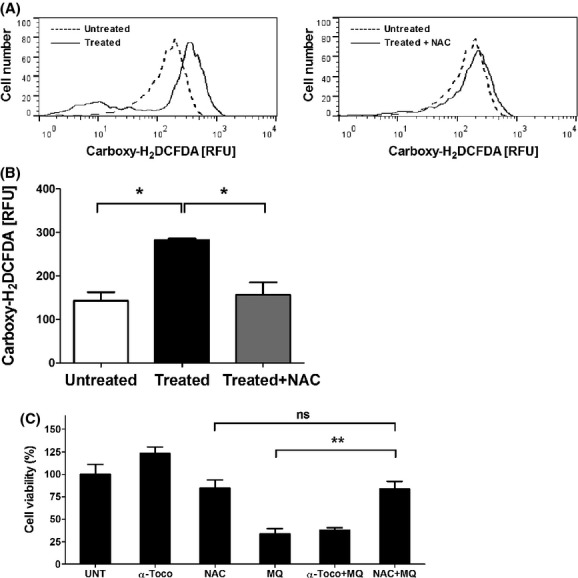Figure 5.

Mefloquine-induced mast cell death is dependent on ROS production. (A) Histogram showing ROS generation (measured with the fluorescent ROS probe Carboxy-H2DCFDA) after 30 min incubation of BMMCs (0.5 × 106 cells) with 20 μmol/L of mefloquine in the presence or absence of N-acetyl cysteine (NAC). Dashed lines represent untreated cells whereas solid lines represent mefloquine-treated cells in the absence (left panel) or presence of NAC (right panel). (B) Quantification of the reactive oxygen species (ROS) production after 30 min incubation of BMMCs (0.5 × 106 cells) with 20 μmol/L of mefloquine in the presence or absence of NAC. Data represent the geometric mean of carboxy-H2DCFDA fluorescence intensity for each sample. (C) The effect of the antioxidants α-tocopherol or NAC on cell viability. BMMCs (0.5 × 106 cells) were preincubated with or without α-tocopherol (0.4 mmol/L) or NAC (8 mmol/L). After 2 h incubation, cells were either left untreated or treated with 20 μmol/L of mefloquine for 8 h. The experiments were performed in triplicate; the bars represent mean ± SEM. **P < 0.01. UNT, untreated; α-Toco, α-tocopherol; MQ, mefloquine.
